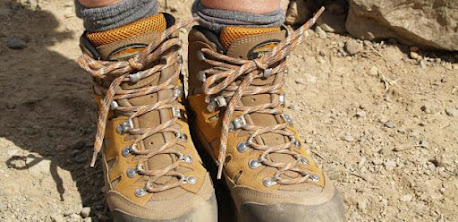Guide to buying down jackets
Do you want to buy a down jacket to use on your hiking trips, but has the price scared you off? Down in itself already a very expensive material, and because of the complex, labour-intensive construction down jackets are even more so. It's however also one of the best investments you can make for your hiking gear. Down is toasty warm for its extreme light weight and great packability - there's really no match. A good down jacket will last you many years, but only if you do take good care of it and use it only as intented. Always follow the instructions on how to wash your down jacket and don't store them compressed. A down jacket is not meant for wearing when you are actually on the move. Down will shrink immensly when it gets wet, losing all insulative properties, so don't expose it to moisture - either from precipitation or sweat. It is also fragile, so don't wear it under a backpack. A down jacket is instead perfect for putting on to stay warm once you've reached camp, for sled tours and snowmobile trips. Or wear it during a long break, if conditions are dry.
 |
| Synthetics during the day, down at night. Northeast Finland. |
But which down jacket to buy out of all the options available? Because down jackets typically lack comfort temperature ratings beyond vague describtions like 'warm' and 'light', and the listed features and specifications tend to be rather technical, it's difficult to figure out which down jacket to buy. That's why I've assembled a guide for you.
Down quality
There are three factors that influcence the quality of down: the source, the feather/down ratio, and the cuin number. Down typically comes from either ducks or geese. Of those two, geese down is of a higher quality. Feathers will be mixed in the filling to give the down a little more volume. The ration is indicated by for example 95/5, meaning that 95% of the fill is down and 5% of the fill is feathers. Don't buy a down jacket that has more than 10% feathers. Finally, the cuin tells us about the quality of the down: the highter the number, the highter the quality. High-quality down is loftier, trapping more air and thus more warmth for less weight and a greater compressability. It is more expensive, though. To experience the full benefits of down, choose 800 cuin or higher. Anything below 650 cuin won't be much better than a synthethic fill.
The fabric
The fabric of down jackets comes in a variation from the thinnest quality that is barely able to stop feathers from coming through all the way to tough, waterproof tissue that would be very hard to tear. It doesn't make much sense for me to combine down with a heavy, bulky fabric, since it destroys the whole purpose of using down. The lightests of fabrics are tempting, but beware, no matter what the product description says you'll pay a price in sustainability. Some middle way between lightness and sturdiness, like pertex quantum fabric, is probably the most sensible choice. Whatever your final choice is, make sure the fabric of the jacket is at least ripstop, breathable and windproof. And have a good look at the quality of the seams.
Jacket fit and construction
A down jacket will insulate better if it is more or less form-fitting. You'll want to allow room for one or two thick layers beneath, however. It's important that the jacket is long enough to keep your whole back covered, also when you lift your arms, so do test that, as well as the length of the arms. A box chamber construction is warmer than a stich-through construction, as the latter one will introduce cold spots in the places without down. A roomy hood is a nice feature. I also always look out for deep pockets, both on the inside and outside of the jacket. Especially when the temperatures drop well below freezing, these pockets are great places to store electrics and snacks, or even a water bottle. Since a few years, down treated with a hydrophobic coating is available, which should improve its insulation when wet. I've never seen it for myself but don't think it's that useful - you should keep down always dry anyway. Lastly, check the sturdyness of the zippers. Fabric shouldn't be able get stuck in them. And can you operate them with gloves on?
Down fill
This number refers to the actual weight of the down filling. This, much more so than other specifications, will determine how warm the jacket actually is, but to my frustration not all brands actually give that number. Based on my experience, I advice to go for around 100gr of good quality down if you want a jacket to use in plus zero Celcius temperatures, 200gr down if you expect temperatures to drop to -10 or so, and 300gr of more of down for trips in those really frigid winter or extreme altitude conditions.
I hope this was helpful!
 |
| Watching the northern lights on a cold september night in southwest Greenland, comfortable in thermoclothing and a warm down jacket. |



where can i buy a stylish mens biker jackets in good quality leather and reasonable price.
ReplyDelete